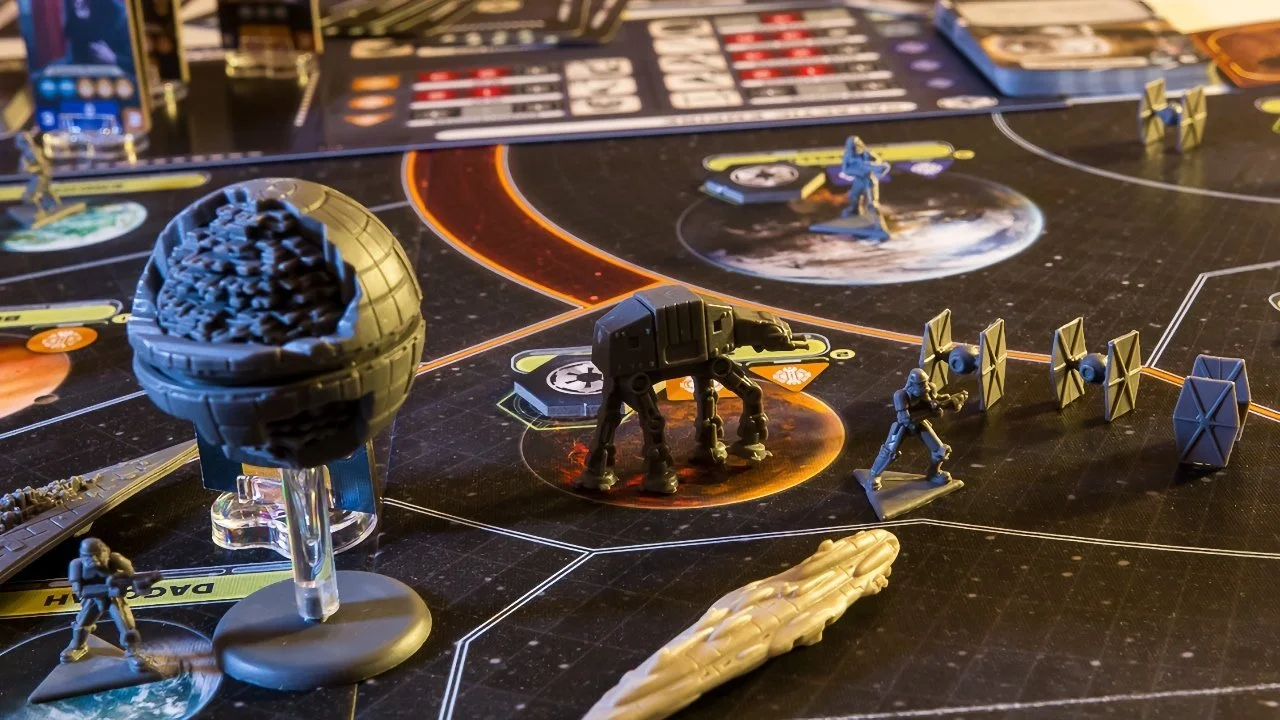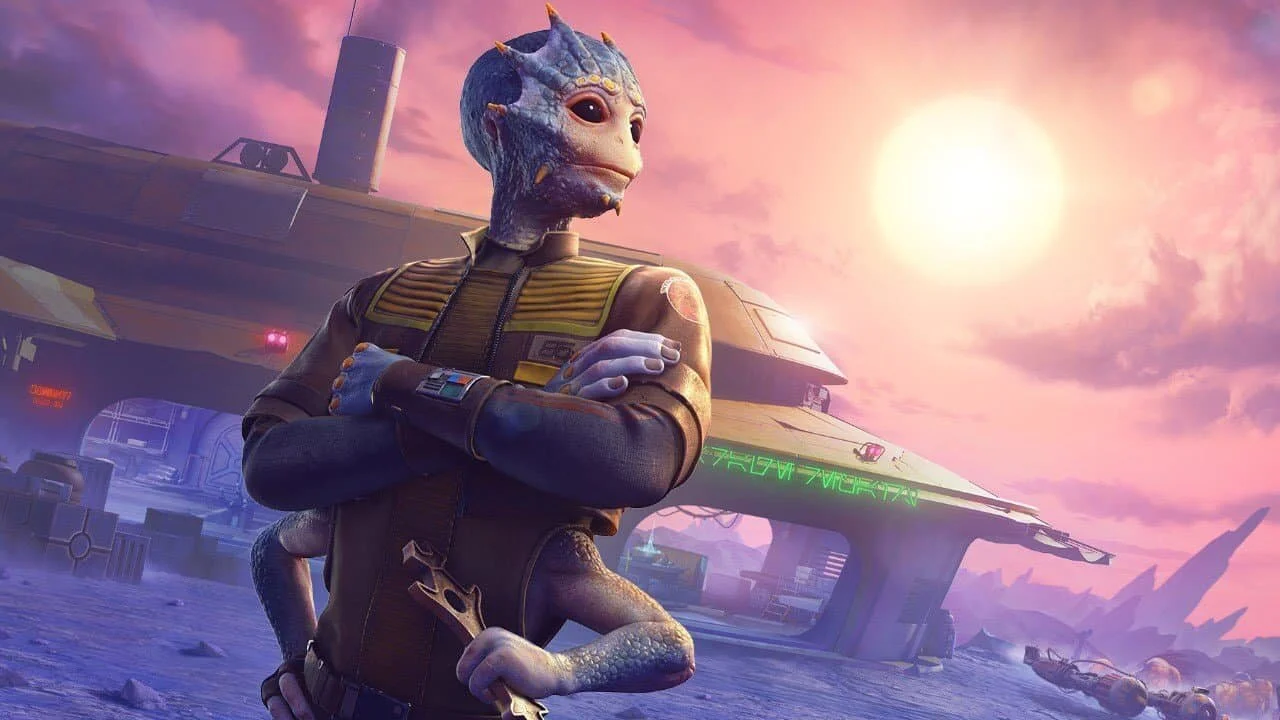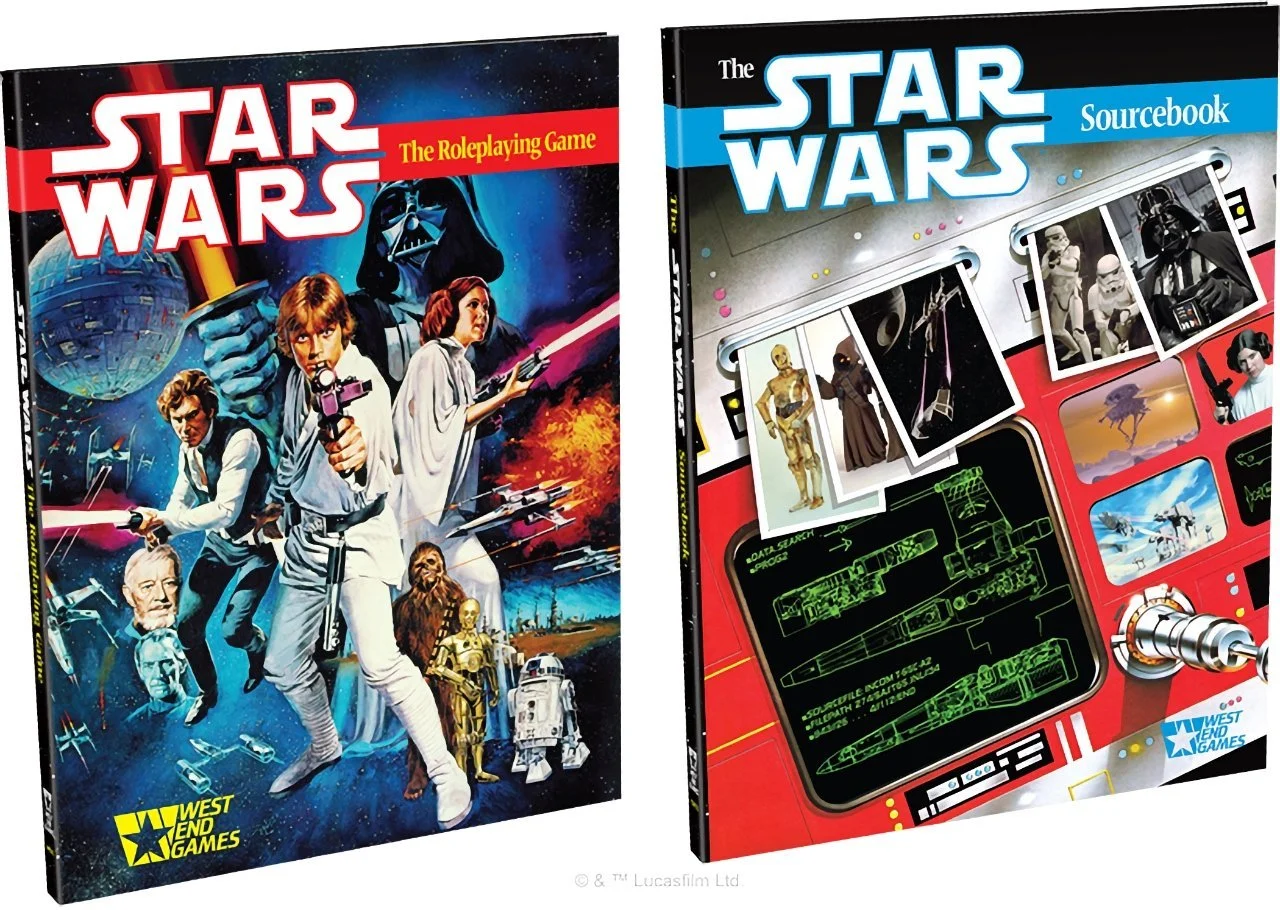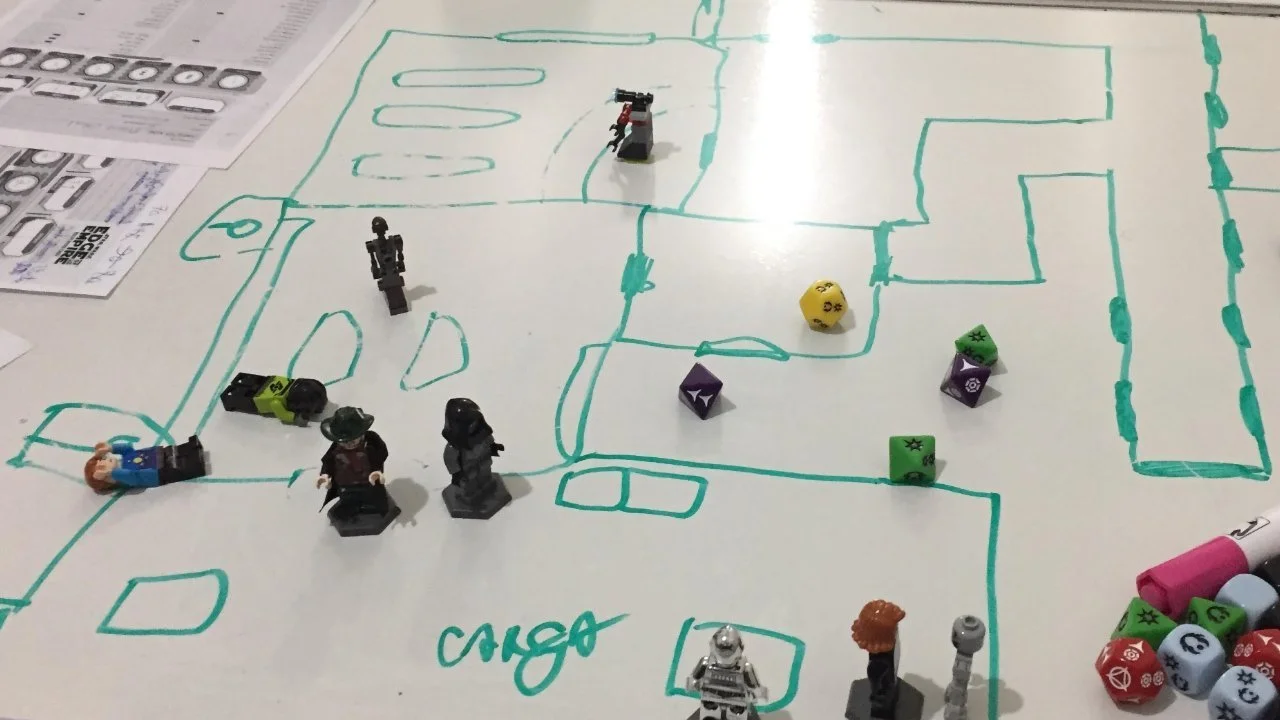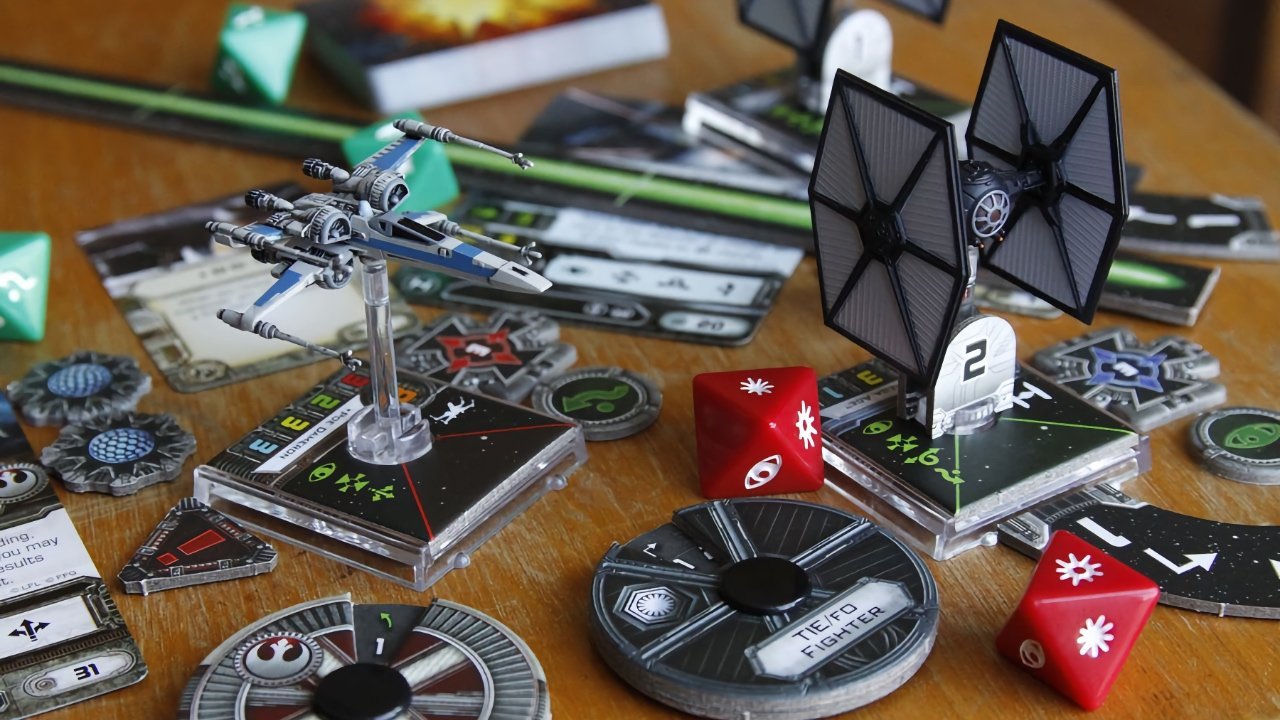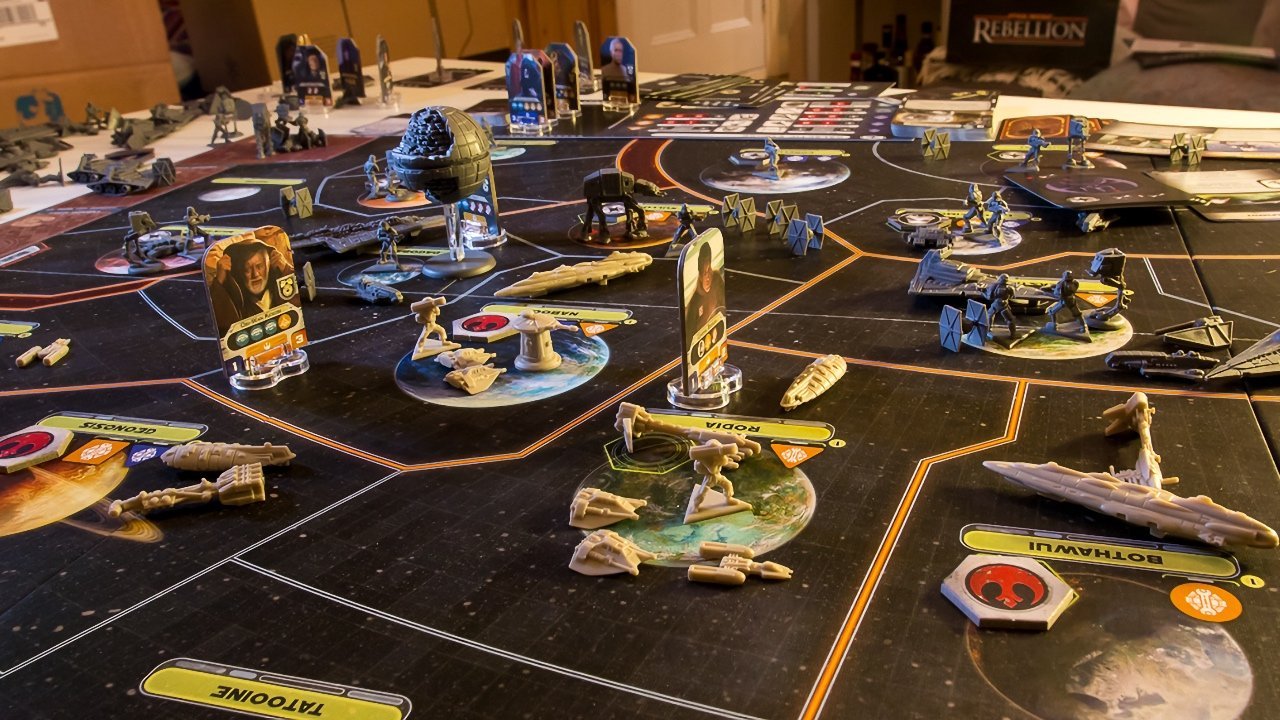'Star Wars' Board Games 101 - Where To Start
Image Source: Shut Up & Sit Down
Getting into the Star Wars Expanded Universe was a taunting task. With hundreds of novels, novellas, and short stories and more than a thousand comics, both one-shots and larger story arcs, finding an entry point could be intimidating for someone who had just seen the (then) six films and maybe The Clone Wars. With Lucasfilm declaring the EU non-canon in 2014, the company leveled the playing field for everyone with a hard reset, but it has been nearly a decade since then, and things are starting to get complicated again.
The situation with Star Wars non-video games is not quite as confusing, but still, there are some hurdles on how and where to start. These games have been around as long as Star Wars has existed (the first board game, from Kenner, was released in the same year as the original movie), and although they don't get as much fanfare as movies, TV shows, or video game releases, there is an active community of players around the world.
RELATED:
From here on out, we will refer to these games as board games (in a broader sense), though not all of them include an actual board. They usually still require some sort of structure on how to position the figures, miniatures, or card decks, or they limit the size for the playing field in some way (which is similar to a literal board).
Most Star Wars board games can be categorized into one of the following:
Role-playing games (RPG)
Card games
Miniature games
Board games (in a narrower sense)
What makes matters complicated is the fact that for many of these games, several supplements, add-ons, or expansion packs are available, but you need a basic “core” game to play them. The packaging sometimes doesn't clearly indicate this, and a potential new gamer who buys, let's say, a Clone Wars game only finds out at home that they are not able to play it, unless he or she invests in the bigger (and more expensive) core game.
The Story So Far
The first major license holder for Star Wars board games was West End Games, who produced games between 1987 and 1998 and was famous for their RPGs. Especially during the "dark times" after the end of the original trilogy and before the release of Timothy Zahn's Thrawn Trilogy, their sourcebooks and adventures were the only new Star Wars content out there, and often acted as reference material for many authors of the Expanded Universe.
Source: Stargazer’s World
After WEG got into financial troubles, Wizards of the Coast stepped in, releasing RPGs, card games, and miniature games until 2010, when they let their license expire, also due to the "economic downturn". All these games have been out of print for many years, but it is still possible to find them at flea markets or online auctions. As with most collectibles, prices vary between a few bucks and several hundred dollars for complete and rare core games in mint condition. And yes, technically, these games are all Legends and not part of the current Star Wars canon. Currently, the biggest licensee of Star Wars board games is Fantasy Flight Games (FFG), but there are also other companies (such as Ravensburger or Z-MAN) that put out games on a smaller scale.
It would far exceed the scope of this article to go into the details of the rules of every Star Wars board game currently available, but we will cover common threads and name the most important titles of each category, so new players may find it more easily to decide what raises their interest and where to start.
All of the games are designed for at least two players, although it is technically possible to play them alone (you can play chess against yourself, after all). But it is much more fun when the Dark Side and the Light Side aren't controlled by the same person, although Darth Sidious would probably disagree.
Role-Playing Games
Source: Reddit
RPGs are a way of "active storytelling" where a “Game Master” acts as a kind of director for the other players and assigns them different races, roles, and abilities. Although two is the minimum, they are more fun when played with at least four players. The foundation of all these games is the rulebook, which is usually amended by separately sold supplements and sourcebooks. Many of the games also include dice (often 6 or 20 sides) to randomize the events, adventures, and battles, as well as special cards for certain abilities, circumstances, or actions.
Newcomers should start with the core rulebook (although sometimes there is also a Beginners Kit with less complex structures) and expand from there with additional supplements or advance to the Game Master's Kit, if available.
FFG currently offers three RPGs, that are completely cross-compatible (and a fourth stand-alone one for The Force Awakens): Edge of the Empire, Age of Rebellion, and Forces and Destiny. A Beginner's Game is available for all of them as well as several additional sourcebooks, covering various events in the Star Wars timeline and adding new characters, vehicles, and resources to expand the gameplay.
Card Games
Source: Star Wars News Net
Card games are typically two-player games, with one taking the Light (Rebellion or Jedi) and the other taking the Dark Side (Sith or Empire), each trying to either nullify the objectives of the other or to "kill" a certain number of opponents. The various cards include missions, objectives, characters, abilities, and circumstances, and players must use physical tokens as resources to build a base, upgrade a vehicle, or train a character.
Some of the games also include one or more dice to randomize the gameplay. Another category is deckbuilding games that include a more tactical aspect, as both players have to cleverly combine cards into a deck (hence the name) to gain an advantage over the other side.
Getting into Star Wars card games typically requires a core set or a starter set (dedicated to a certain character). From there, numerous expansion packs are available, adding new characters, abilities, locations, and events.
Players interested in getting into card play should start with FFG's core set of Star Wars - The Card Game or Star Wars - The Deckbuilding Game.
And yes, real-world Sabacc cards and a Star Wars version of UNO are available as well.
Miniature Games
Source: Polygon
These are more than just games; they are collectibles, as they include beautifully crafted, detailed, and painted models of Star Wars vehicles, ranging from small X-wings and TIE fighters to the Tantive IV to massive Star Destroyers.
Again, one player takes the side of the Rebel Alliance while the other sides with the Empire, both trying to destroy as many of the enemy's ships as possible. Each vehicle offers certain characteristics regarding speed, maneuverability, endurance, or firepower. Cards are used to move the ships forward, backward, or sideways on a virtual game grid, to either bring them in firing range of an opponent's ship or to move it away. It is possible to repair damaged ships as well as upgrade them. Cards allow for adding obstacles like asteroids, and both players use dials to decide on a more offensive or defensive strategy.
As usual, there is a core set with a small number of ships and a vast number of expansion sets, adding vehicles from nearly all eras of Star Wars.
A great way to start is the core game of Star Wars: X-wing Miniatures Game, which is also available as an enhanced second edition, or Star Wars: Armada, for those who prefer massive ship skirmishes over dogfights.
But beware: with a large number of expansion packs and the tendency to use the miniature ships also as collectibles, these games quickly become quite expensive.
Board Games (In The Narrower Sense)
Source: Shut Up & Sit Down
There are Star Wars-themed games of chess, Monopoly, and Trivial Pursuit, which pretty much work as their non-Star Wars counterparts, using Stormtroopers instead of pawns, spaceships instead of streets and houses, and testing your knowledge of the galaxy far, far away. But the real deal are Star Wars board games, which are the sum of the other three categories, as they include elements of RPGs, cards, dices, and miniature ships.
The go-to game here is Star Wars: Rebellion, which was released in 2016 and is regarded by many players not only as the best Star Wars board game but also as one of the best board games of all time.
The objective of the player representing the Rebellion is to set up and maintain a secret base on a certain planet as long as possible while the Empire tries to find and destroy it. The Empire can rely on its massive fleet, weapons, and soldiers, while the Rebels have to use distraction, guerilla tactics, and the hope of finding allies. The good guys may even be able to win small victories against the Empire, but they can't ultimately defeat them, so it is basically a cat-and-mouse game.
FFG released an expansion to Rebellion in 2017 called Rise of the Empire, focusing on events and characters of Rogue One, but as with all expansion sets, it requires the core game and can't be played as a standalone.
So, there you are. Even without the "old" games, there is plenty to choose from when it comes to Star Wars board gaming, be it a fast-paced and usually short card game, a more creative RPG, or a full-scale board game like Rebellion. Before buying one of the games, it might be a good idea to have a look at one of the many online gaming communities and get in touch with other players to find out what is to your liking. Besides, there are offline communities that regularly meet in libraries or other public places to play a round of X-wing Miniatures or a deckbuilding card game. Or maybe more than just one round.
And again, when buying a game: remember to always start with the core game, not one of the expansions. Have fun!
READ NEXT:
Source: Wikipedia

